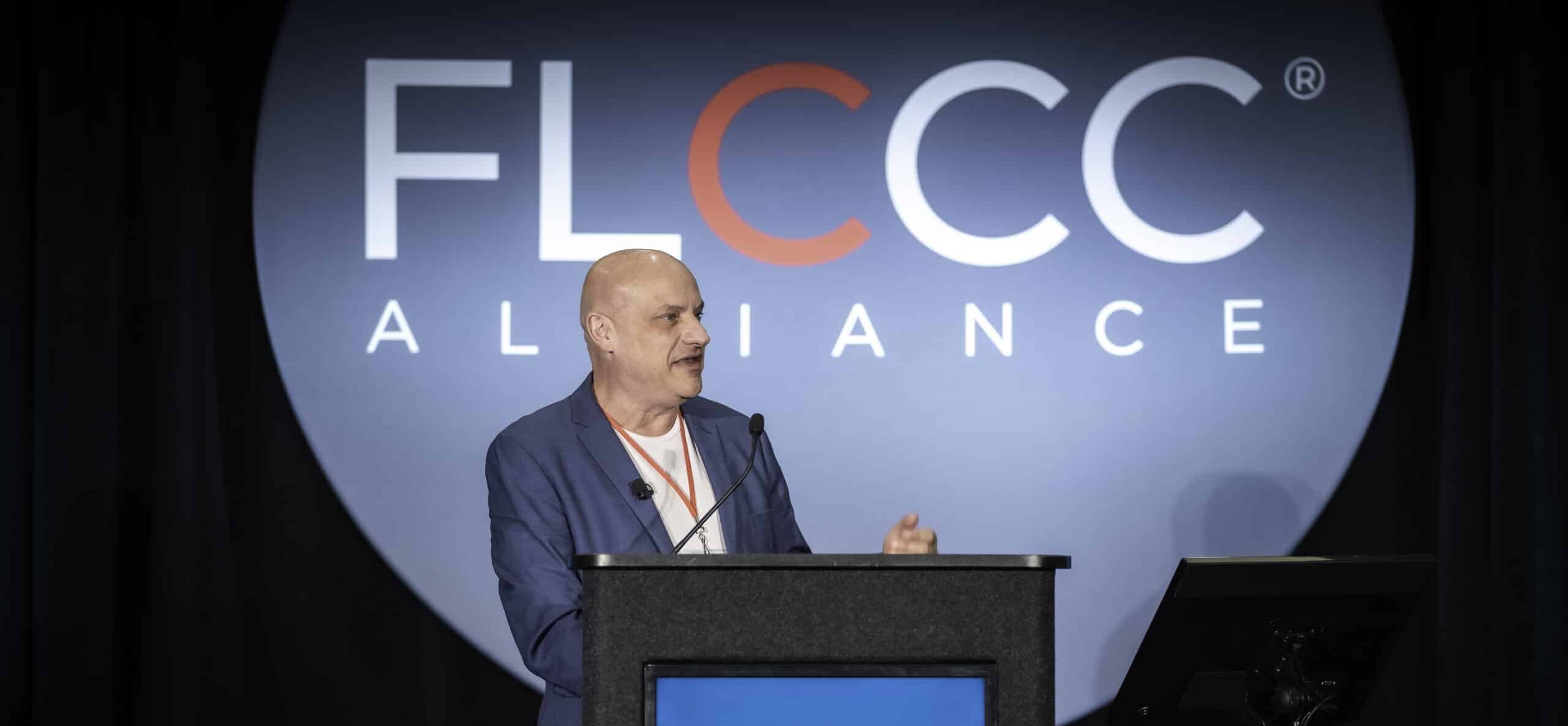Dr. Keith Berkowitz writes in Medium on how he discovered the FLCCC’s MATH+ Protocol and became a member of the Alliance
My medical journey to find a treatment for COVID -19
How can this be happening? I said to myself on that restless Wednesday night, March 26th. The COVID-19 virus was spreading like wildfire, claiming the lives of both young and old. We are missing something; this virus is different. This current pandemic reminded me of the last health crisis I was involved in, the HIV epidemic in the early 1990’s. I remember working at St. Vincent’s Hospital as a fourth-year medical student taking care of ventilated patients on the medical floor because there were no Intensive care unit beds available. That was also a novel virus that both baffled and overwhelmed the medical community.
With the help of my office staff, I began trying to learn as much as I could about COVID-19 and possible treatment options for those critically ill in the hospital with this virus. That Friday, I found a research study by Dr. Paul Marik, M.D., Chief of the Division of Pulmonary & Critical Care Medicine at East Virginia Medical School, in the journal Chest, published in 2017. In his study, 47 of 94 critically ill patients in the intensive care unit received the iHAT protocol (intravenous corticosteroids, intravenous ascorbic acid, and intravenous thiamine) showing a decrease in mortality from 40.4% to 8.5%. [1] Over his career, he has treated over 1,700 cases with this protocol.
I reached out to Dr. Marik, whom I later learned was one of the top critical care specialists in the world, and he explained to me why this virus was different. Dr. Marik pointed out clearly why his protocol would work on the novel COVID -19 virus. This challenged what I was taught about steroids and the danger of using them in patients with viral pneumonia. The administration of steroids during the early stages of infection can increase the replication of a virus and possibly delay the body’s ability to develop immunity. However, Dr. Marik explained, in later stages of the disease, around days 6 to 8, the problem changes as patients are developing respiratory distress in the setting of an overwhelming inflammatory response known as the “cytokine storm.” Here intravenous corticosteroids and intravenous ascorbic acid have a synergistic impact in fighting the inflammatory storm. I needed to confirm Dr. Marik’s hypothesis, so I set about contacting other critical care specialists.
Next, I spoke with Dr. Joseph Varon, M.D., Chief of Critical Care at United Memorial Medical Center in Houston, Texas, and Dr. Pierre Kory, M.D., Critical Care Service Chief at the University of Wisconsin at Madison. Both confirmed that they were using Dr. Marik’s protocol with great success. Dr. Varon to date has treated 40 patients with COVID-19 with not one mortality — 30 patients have already been sent home, including a 90-year-old woman who had a history of stage 4 colon cancer. Dr. Kory emphasized the importance of early intervention in preventing the need for ventilators and mortality. In an unpublished study of 139 patients with septic shock admitted to the intensive care unit, Dr. Kory saw a mortality rate of 0% in 37 patients who were treated within 6 hours of admission, but mortality increased to 31.2% in the 52 patients whose treatment was delayed by 12 hours.
At this point, I was introduced to Dr. Howard Kornfeld, M.D., a board-certified emergency room physician and Medical Director of Recovery Without Walls in Mill Valley, California. Dr. Kornfeld took the paramount step of creating a working group and organizing our first Zoom call, during which The Front-Line Critical Care Working Group was born. Three more physicians joined: Dr. José Iglesias, D.O., Department of Nephrology, Jersey Shore University Medical Center in Neptune, New Jersey; Dr. G. Umberto Meduri, M.D., Division of Critical Care and Sleep Medicine, University of Tennessee Health Center in Memphis; and Dr. Fred Wagshul, M.D., Medical Director, Lung Center of America in Dayton, Ohio. Passionate, talented friends assisted: former CBS News consumer affairs reporter Betsy Ashton, writer and visual storyteller Joyce Kamen, website whiz Malik Soomar, and Dr. Kornfeld’s staff. Our group began to share information and develop a consensus protocol to distribute to other physicians, politicians, and the media.
We then learned about a disturbing high mortality among patient’s requiring mechanical ventilation. The Intensive Care National Audit & Research Centre in London, United Kingdom, found that among 98 patients, who required mechanical ventilation for COVID-19, only 33 were discharged alive. Those under the age of 50 were also dying. Early autopsies showed that patients were developing a hypercoagulable state (the formation of blood clots) leading to fatal pulmonary emboli. Dr. Meduri provided our group with four large studies of 9,149 patients from two earlier epidemics: the 2003 SARS- coronavirus, and the 2009 H1NI influenza virus, which showed a reduction in duration of mechanical ventilation and mortality when treated with corticosteroids. In addition, there were early positive results from China in COVID-19 patients and expert recommendations from the front lines of China, South Korea, and Italy, showing that mechanical ventilation can damage the lungs and, if possible, needs to be avoided.

Our protocol was adjusted to accommodate the new steroid dosing and the addition of lower molecular weight heparin to prevent blood clot formation. To improve oxygenation, prone positioning, in which a person lies flat with the chest down, as well as high flow heated oxygen by nasal canula were added. We named the protocol MATH+, for the IV infusions of the steroid Methylprednisolone, with Ascorbic acid (yes, Vitamin C), Thiamine (Vitamin B1) and the anticoagulant Heparin that are used.
We used our rapidly accumulated clinical observations as well as the experience of specialists around the world to formulate this protocol, which continues to be adjusted based on new clinical information. The foundation of our protocol is strong traditional therapeutic principles and basic science. COVID-19 is a novel virus that attacks through an unrelenting inflammatory response. To combat this, early and aggressive intervention is paramount if lives are to be saved and mechanical ventilation avoided. Treatment must begin within the first six hours that patients with respiratory distress arrive in a hospital. If treatment is delayed by more than 12 hours, previous studies on septic shock have shown a dramatic increase in mortality.
I know that other medical professionals, including myself, would prefer to see randomized controlled trials to prove the efficacy of our treatment protocol. Unfortunately, we cannot wait two years for those results; patients are dying today. New York State has had 17,671 deaths and the United States has lost 55,024 citizens.[2] We believe that the wider adoption of our treatment protocol could save thousands of lives. But action must be taken today; time is of the essence.
Keith Berkowitz, MD
Medical Director, Center for Balanced Health
New York, New York
1. East Virginia Medical Center — Dr. Paul Marik — Vitamin C/Vitamin B1/hydrocortisone, 47 patients — decrease in mortality from 40.4 to 8.5 percent. “Chest,” American College of Chest Physicians, 2017
2. https://www.bing.com/search?q=death+toll+from+covid+19
1. East Virginia Medical Center — Dr. Paul Marik — Vitamin C/Vitamin B1/hydrocortisone, 47 patients — decrease in mortality from 40.4 to 8.5 percent. “Chest,” American College of Chest Physicians, 2017
2. https://www.bing.com/search?q=death+toll+from+covid+19





